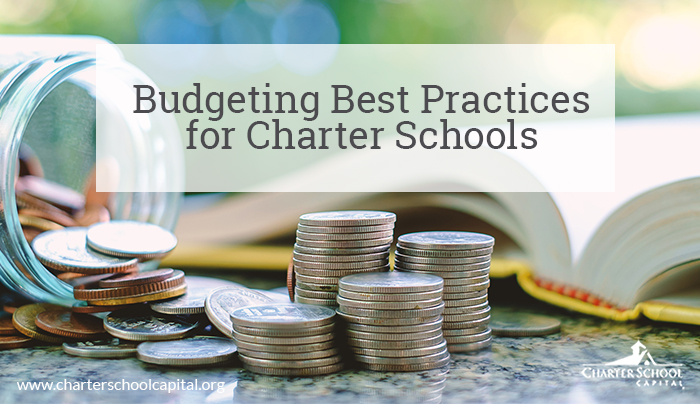
Did you miss our live session at the National Charter Schools Conference; Budget Best Practices for Charter Schools? Not to worry! We wanted to make sure to share the highlights from this session right here on the Charter School Capital blog. We were honored to have two charter school finance experts whose depth of experience brought so much value to this presentation.
 Spencer Styles, President & CEO, Charter Impact
Spencer Styles, President & CEO, Charter Impact
 Matt Percin, Manager of Financial Analysis and Risk, Charter School Capital
Matt Percin, Manager of Financial Analysis and Risk, Charter School Capital
Since the opening of Charter School Capital 10 years ago, we’ve reviewed thousands of charter school budgets. Year after year, we see common mistakes many charter schools make when budgeting for their academic year. So, we’re sharing some budgeting best practices to help you have a financially successful academic year—whether your school is growing student enrollment, expanding facilities, or implementing new educational programs. Don’t just survive – thrive!
Below is an outline of our presentation, but scroll to the bottom to download the handy datasheet and you’ll also find a link to the video of the live presentation.
BUDGET BEST PRACTICES FOR CHARTER SCHOOLS
BUDGET PLANNING FOR STARTUP SCHOOLS
- Start with petition budget
- Pay close attention to your budget and then map out your priorities for the year
- Have a plan and show how costs frame the budget to show how parts make up the whole
- Build a budget that includes everything on your wishlist, then prioritize (with your stakeholders)
- Plan for surprises by having a budget surplus to cover unexpected costs
- Lay the foundation for your annual budget, but plan for regular updates along the way
BUDGET PLANNING FOR GROWTH/MATURE SCHOOLS
- Start with a baseline budget based on the previous year
- Pay attention to how enrollment projections directly affect revenue
- Actively manage your cash flow: financing, receivables, payables, etc.
- Understand your accounts payable and vendor relationships
- Strategically partner with external service providers and keep them in the loop
CASH FLOW PLANNING
- What attendance metric drives your revenue?
- What revenue is monthly, quarterly, or more variable?
- What happened in prior years with regards to the timing of payments?
- What costs are fixed monthly and which vary?
- Communicate with your vendors to plan your accounts payable according to your budget ebbs and flows
- Financing: Note timing of inflow from your financer and outflow timing for payments
- Receivables: Map out the timing of state payments and how that affects your cash flow
REVENUE FACTORS TO CONSIDER
- Note the correlations of free and reduced-price lunch to your need for fundraising
- Track and understand your fundraising families and need for per-student fundraising goals
- Understand your restricted grants: how it was intended to be spent, programs reliant on the grant, etc.
- Have a plan for the sustainability of institutional fundraising and the programs supported by it
EXPENDITURE TRENDS
- Salary scale changes: your area’s unemployment rate, demand for teachers, increasing salaries, etc.
- Retirement benefits: Compare a defined contribution plan verus a defined benefit plan
- Do you need new textbooks or to renew or change your school’s technology to stay current?
- Be mindful of facility cost increases (interest rates, exemption laws, etc.) Plan on how to fund any needed updates or additions
BUDGET SAFEGUARDS
- Review salary scale changes with the future in mind
- Consider non-financial perks for your employees: recognition, flexibility, career path and professional opportunities, etc.
- Have an equipment/technology plan to budget for upgrading or replacing your tech infrastructure
- Facilities: Plan new construction, your maximum enrollment, and set a facilities reserve fund
- Have an annual Board of Directors discussion on your school’s long-term initiatives, with a focus on your mission
- Set target fund balance and target cash balance
To watch the video of the live presentation, you can find it on our Facebook page.
To download the printable one-page PDF datasheet, click here.
We hope that this has been helpful and valuable information! We’d love to read your comments and suggestions, so please add them in below.
Charter School Capital is committed to the success of charter schools and has solely focused on funding charter schools since the company’s inception in 2007. Our depth of experience working with charter school leaders and our knowledge of how to address charter school financial and operational needs have allowed us to provide over $1.6 billion in support of 600 charter schools that educate 800,000 students across the country. For more information on how we can support your charter school, contact us!